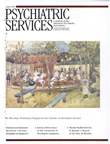A qualitative approach to assessing the effects of system change on consumers, families, and providers
Abstract
OBJECTIVE: In 1988 Vermont implemented a policy designed to reduce the state hospital census and expand community-based services. This qualitative study assessed perceptions of the policy's impact among mental health consumers, family members, and providers. METHODS: Eleven focus groups were convened, which included 94 participants from across the state. Separate groups were held for consumers, family members, and providers. Trained facilitators guided discussion of the policy's effect on quality of life, housing and vocational status, community integration, and social networks. Audiotapes of the discussion were transcribed, and content was analyzed. RESULTS: Several universal themes were noted. All participants reported that stigma was still a substantial barrier to integration and that community education to reduce stigma had not been effective. Tension between families and providers was a problem; family members felt that although providers depended on their supporting the consumer, they were not included in treatment planning. All participants noted that urban areas were better served by the policy's service packages. A lack of coordination of community services was reported to be a continuing problem across the state. In contrast to findings of previous studies, consumers in this study preferred not to live alone, which led to feelings of isolation. CONCLUSIONS: Service delivery in rural areas and system coordination throughout the state must be improved. Families' conflicting feelings of burden and isolation must be addressed. Further research should determine more clearly the range of housing preferences among consumers.
Access content
To read the fulltext, please use one of the options below to sign in or purchase access.- Personal login
- Institutional Login
- Sign in via OpenAthens
- Register for access
-
Please login/register if you wish to pair your device and check access availability.
Not a subscriber?
PsychiatryOnline subscription options offer access to the DSM-5 library, books, journals, CME, and patient resources. This all-in-one virtual library provides psychiatrists and mental health professionals with key resources for diagnosis, treatment, research, and professional development.
Need more help? PsychiatryOnline Customer Service may be reached by emailing [email protected] or by calling 800-368-5777 (in the U.S.) or 703-907-7322 (outside the U.S.).



